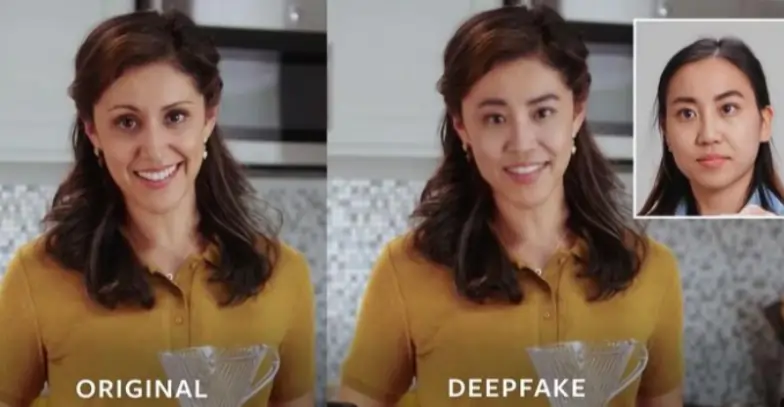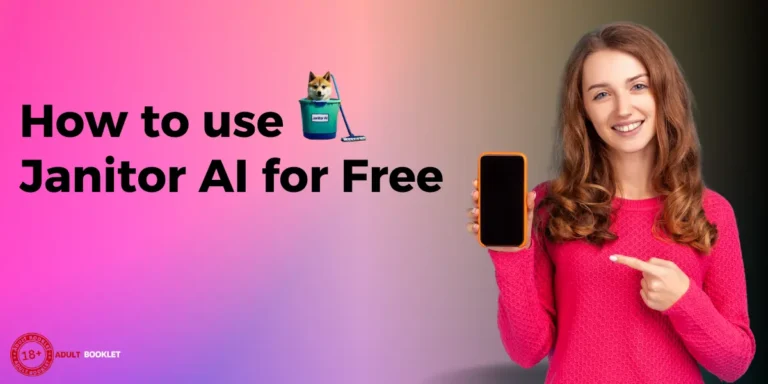Have you ever wondered how those mind-blowing deepfake videos are made? You know, the ones where celebrities or public figures appear to say or do things they never actually did? It's like Photoshop on steroids! As deepfakes become more advanced, it's crucial to understand how they're made and the potential risks they pose.
In this article, we'll explore the nuts and bolts of deepfake creation and arm you with the knowledge to spot them in the wild. So, buckle up because we're about to dive into the fascinating world of deepfakes and show you how to create your own in 2024!
What are Deepfakes?

First things first, let's break down what deepfakes are. In a nutshell, deepfakes are AI-generated videos that manipulate or fabricate visual and audio content, making it appear as if someone said or did something they didn't. This technology uses machine learning algorithms, specifically generative adversarial networks (GANs), to create highly realistic and convincing forgeries.
Examples of deepfake usage range from harmless fun, like inserting celebrities into movies or TV shows, to more nefarious purposes, such as creating fake news, political propaganda, or even revenge porn.
Potential implications and concerns surrounding deepfakes include misinformation, privacy violations, and damage to personal reputations. As deepfake technology becomes more accessible and sophisticated, it's crucial to stay informed and vigilant about its potential misuses.
Responsible Use of Deepfake Technology
Now, before we get into the nitty-gritty of making your own deepfake, it's crucial to understand the ethical implications. Deepfake technology has the potential for misuse and negative consequences, such as spreading misinformation, damaging reputations, and invading privacy. To mitigate these risks, it's essential to promote responsible use.
Transparency and disclaimers are crucial when sharing deepfake content. Creators should clearly state that their work is artificial and not intended to deceive. This helps maintain trust and prevents misunderstandings.
Educating the public about deepfake technology is another vital step in ensuring responsible use. By raising awareness of the potential risks and teaching people how to spot deepfakes, we can create a more informed society that's better equipped to navigate this rapidly evolving landscape.
How to make a Deepfake Video: Step-by-Step Guide
Step 1: Gather Your Resources
Alright, let's get started on creating your very own deepfake video in 2024! To create a convincing deepfake, you'll need some essential tools and resources:
- A powerful computer with a dedicated graphics processing unit (GPU)
- High-quality video footage of the person you want to deepfake (the more diverse the facial expressions and angles, the better)
- Deepfake software like DeepFaceLab, FaceSwap, or DeepFakes Web
Make sure your video footage is at least 4K resolution and several minutes long to achieve the best results. The more data you feed the AI, the more realistic your deepfake will be.
Step 2: Prepare Your Data
Once you have your video footage, it's time to prepare the data for the deepfake software. This involves:
- Extracting frames from the video
- Cropping and aligning the faces
- Organizing the images into source and destination folders
Some deepfake software like DeepFaceLab have built-in tools to help with this process, but you can also use external tools like FFmpeg or Dlib for more control.
Step 3: Train the AI Model

Now comes the exciting part – training the AI model! This is where the magic happens. The deepfake software uses a technique called Generative Adversarial Networks (GANs) to learn the features and movements of the faces in your dataset.
The training process involves two neural networks: a generator and a discriminator. The generator creates fake images, while the discriminator tries to distinguish between real and fake images. They keep competing and learning from each other until the generator can create highly realistic deepfakes.
Depending on the size of your dataset and the power of your GPU, training can take anywhere from a few hours to several days. So, be patient and let the AI work its magic!
Step 4: Fine-tuning and Optimization
After the initial training, you may notice some imperfections or artifacts in your deepfake. This is where fine-tuning and optimization come into play. Some techniques to improve the quality of your deepfake include:
- Adjusting the model architecture and hyperparameters
- Using additional training techniques like transfer learning or progressive growing
- Applying post-processing filters and color correction
Experiment with different settings and techniques to find the optimal combination for your specific deepfake project.
Step 5: Create Your Deepfake Video
Once your model is trained and optimized, it's time to put it to the test and create your deepfake video. Most deepfake software provides an interface where you can:
- Select the source and destination videos
- Adjust parameters like face alignment, blending, and color correction
- Generate the final deepfake video
The quality of your deepfake will depend on various factors like the training data, model architecture, and post-processing techniques. Don't be discouraged if your first attempt isn't perfect – keep experimenting and refining your skills!
Top Online Tools for Deepfake Creation
Several online tools and programs are available to help you create deepfake videos, making the process more accessible to those without extensive AI knowledge. Some popular options include:
- DeepFaceLab: A trusted deepfake video maker that generates realistic results. It has been in the business successfully and offers a user-friendly interface.
- Deepfakes Web: An online deepfake software that works in the cloud. All you need to do is upload videos and click a button, and the app does the rest.
- Wombo: Best for creating fun and entertaining deepfake lip-sync videos. Wombo prides itself as the world's best AI lip-sync deepfake app.
- MyHeritage: Offers a unique and free deepfake maker to bring old photos to life, allowing users to see their ancestors in motion.
Detecting and Verifying Deepfakes

In an era where deepfakes are becoming increasingly common, it's essential to have tools and knowledge to detect and verify the authenticity of videos. Some techniques to spot deepfakes include:
- Looking for unnatural eye movements or blinking patterns
- Checking for inconsistencies in skin tone, hair, or teeth
- Analyzing the audio for unnatural speech patterns or artifacts
There are also AI-powered deepfake detection tools like Sentinel, Microsoft Video Authenticator, and Deepware that can help identify manipulated videos.
As a creator, it's your responsibility to clearly label your deepfakes as synthetic media and not present them as real footage. Adding watermarks or disclaimers can help prevent the spread of misinformation.
Advanced Techniques and Future Developments
As deepfake technology continues to advance, new techniques and developments are emerging to create even more realistic and convincing videos. One such technique is neural voice cloning, which synthesizes speech that mimics a person's voice and intonation, making deepfakes even harder to detect. Another development is full-body deepfakes, which generate realistic full-body movements and gestures, further enhancing the authenticity of the fake video.
Additionally, real-time deepfakes are becoming increasingly popular, allowing creators to generate deepfakes on-the-fly using live video feeds. Staying up-to-date with these advancements is crucial for creators who want to stay ahead of the curve in this rapidly evolving field. By leveraging these cutting-edge techniques, creators can produce deepfakes that are virtually indistinguishable from real videos, making it even more important to use them responsibly and ethically.
FAQs about Deepfake Technology
What is Deepfake Technology?
Deepfake technology is a synthesis of the terms “deep learning” and “fake.” It uses sophisticated machine learning algorithms to manipulate or generate visual and audio content, creating highly convincing fake videos, images, and audio recordings.
What are some examples of Deepfake usage?
Deepfake usage ranges from harmless fun, like inserting celebrities into movies or TV shows, to more nefarious purposes, such as creating fake news, political propaganda, or even revenge porn.
What is the importance of responsible use of Deepfake technology?
Responsible use of deepfake technology is crucial to prevent misuse and negative consequences, such as spreading misinformation, damaging reputations, and invading privacy.
What are some ways to Promote Responsible use of Deepfake Technology?
Transparency and disclaimers are crucial when sharing deepfake content. Creators should clearly state that their work is artificial and not intended to deceive. Educating the public about deepfake technology is another vital step in ensuring responsible use.
What are some Challenges in Detecting Deepfakes?
Challenges in detecting deepfakes include the rapid proliferation of deepfake technologies, the sophistication of deepfake algorithms, and the lack of standardized detection methods.
Conclusion
Wow, we've covered a lot of ground in this guide! From understanding the basics of deepfakes to creating your own realistic video in 2024, you're now equipped with the knowledge and tools to dive into this exciting world.
Remember, with great power comes great responsibility. Always use deepfake technology ethically, respect others' privacy, and prioritize transparency. By doing so, you can harness the incredible potential of deepfakes for creativity, entertainment, and education while minimizing the risks of misuse.
Keep learning, experimenting, and pushing the boundaries of what's possible with deepfakes. Who knows what incredible innovations and applications await us in the future? Happy deepfaking, and may your videos be as mind-blowing as they are responsible!







